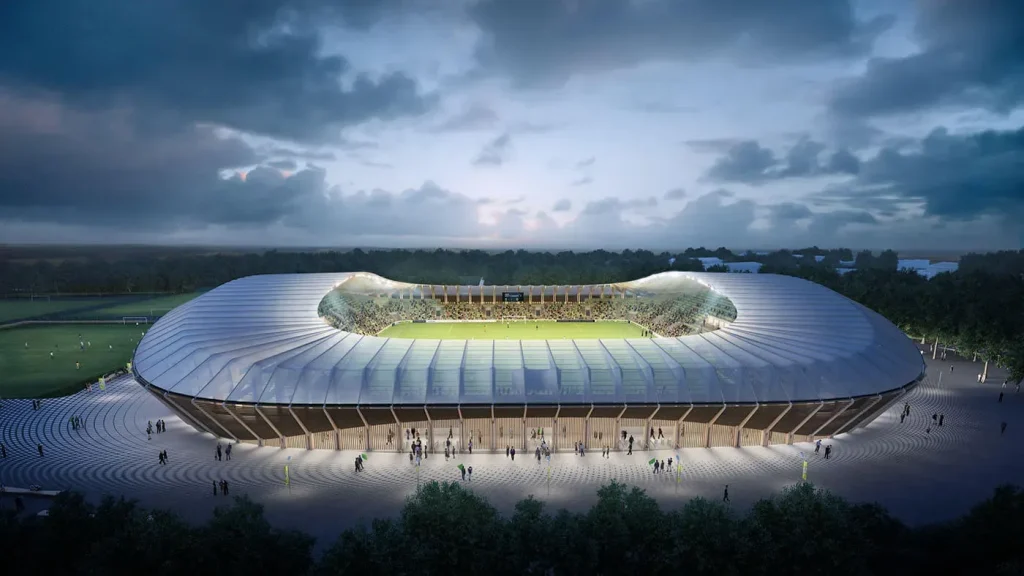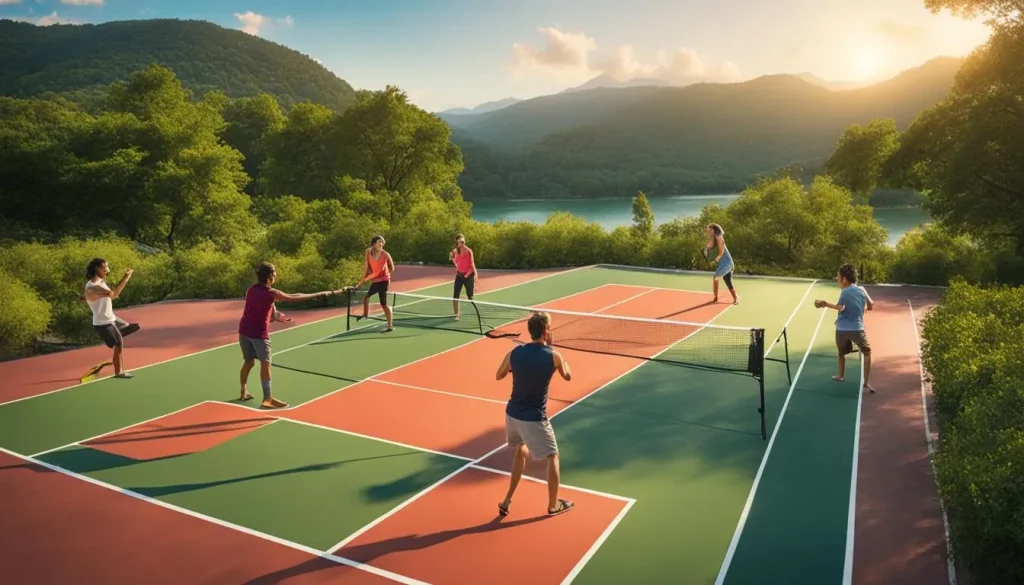Green Stadiums are redefining how cities host major events, blending athletic excitement with planet-friendly design. From energy efficiency to sustainable materials, these venues strive to minimize footprint while maximizing the fan experience. Keywords like green stadium design and eco-friendly stadiums frame the shift toward on-site energy, water stewardship, and responsible supply chains. Smart site planning, daylighting, and renewable energy systems—often with energy storage—are central to the blueprint for sustainable sports venues. As green stadiums proliferate, carbon-neutral stadiums and blue courts sustainability influence project budgets, operations, and community well-being.
In broader terms, these projects are being reimagined as low-carbon campuses that pair sport with urban resilience. Analogously described as eco-conscious arenas, climate-resilient facilities, or water-smart venues, they emphasize energy efficiency, durable materials, and community impact. This LSI-informed framing connects ideas such as energy-efficient architecture, carbon-neutral operations, and water stewardship to the same goals. By weaving these related concepts into planning and storytelling, teams and cities boost discoverability while keeping the narrative accessible to fans, policymakers, and sponsors.
Green Stadiums: Designing for Energy Efficiency and Renewable Integration
Green Stadiums embody energy efficiency blended with on-site renewables, high-performance envelopes, and smart site planning. The goal is to minimize heating and cooling loads through advanced insulation, daylighting, and natural ventilation, while solar PV installations—on rooftops, canopies, or carports—coupled with battery storage enable meaningful on-site clean energy use and resilience. This approach aligns with the principles of green stadium design and supports broader objectives within sustainable sports venues.
With district energy connections and heat recovery networks, Green Stadiums can operate as catalysts for sustainable urban energy. Thoughtful site orientation, shading, and landscaping reduce heat island effects and improve spectator comfort without fossil-fuel cooling. This strategy contributes to carbon-neutral stadiums when integrated with energy storage, demand management, and scalable systems, and demonstrates how eco-friendly stadiums can achieve impact at city scale.
Blue Courts Sustainability: Water Stewardship and Surface Performance
Blue Courts Sustainability extends beyond aesthetics to water stewardship and climate resilience. Low-water coatings, porous or permeable play surfaces, and durable materials help minimize irrigation needs and heat buildup on courts used for basketball, tennis, or multi-use arenas. This focus mirrors the broader aims of sustainable sports venues while embracing the specific benefits of blue courts sustainability.
Water reuse for irrigation, rainwater harvesting, and cooling strategies reduce municipal demand while maintaining surface performance and safety for players and fans. Advances in surface science drive lower maintenance needs and longer lifespans for court materials, cutting embodied energy and waste over the facility’s life. In this light, Blue Courts become a critical element of a holistic sustainability program.
Materials and Construction: From Low-Carbon Cement to Recycled Steel
Materials and Construction outline low-carbon cement substitutes, timber or engineered wood elements where appropriate, and recycled or responsibly sourced steel as standard practice in Green Stadiums. Embracing circular construction—modular designs, on-site material reuse, and flexible layouts—helps venues adapt to future needs while cutting embodied carbon. These choices are core to green stadium design and align with the broader movement toward eco-friendly stadiums.
By prioritizing durability and recyclability in finishes, seating, and interior systems, projects extend facility life and reduce waste. This approach supports carbon-neutral stadiums ambitions and strengthens local supply chains by leveraging regional materials and prefabrication where possible, reinforcing the practical realities of sustainable sports venues.
Operations, Technology, and Fan Experience in Sustainable Venues
Operations and technology bring the design promises to life through intelligent systems. IoT sensors monitor energy, water, and indoor climate in real time, enabling predictive maintenance and real-time optimization that lowers emissions without compromising fan comfort. This data-driven approach is at the heart of sustainable sports venues and illustrates how digital tools amplify green stadium performance.
Waste management shifts toward circular programs—sorting at source, organics composting, and robust recycling—while fan engagement and clear signage turn sustainable practices into routine behavior. When operations teams track metrics toward net-zero or carbon neutrality, the stadium becomes a living example of eco-friendly stadium principles that enhance both experience and environmental outcomes.
Mobility, Community, and Social Sustainability in Modern Stadia
Mobility and community focus expands access and reduces transportation-related emissions through public transit integration, bicycle infrastructure, and pedestrian-friendly campus design. Multi-modal event planning helps nearby neighborhoods thrive and keeps venues connected to the urban fabric, a hallmark of sustainable sports venues. This approach also supports broader goals around equity, health, and community wealth-building.
Social sustainability means diverse workforces, fair-wage practices, local hiring, and community engagement that extend benefits beyond game days. When residents see tangible improvements—green spaces, local economic activity, and youth programs—fans and sponsors become long-term ambassadors for carbon-conscious stadiums and blue-sky field initiatives, reinforcing the social value of sustainable sports ecosystems.
Policy, Economics, and Case Studies: Driving Adoption of Green Stadiums Worldwide
Policy alignment and economic incentives accelerate the adoption of Green Stadiums at scale. Green building standards, renewable energy incentives, and performance-based procurement reduce risk and encourage investors to fund modern, energy-smart venues. Clear targets and standardized metrics help promote widespread uptake within the ecosystem of eco-friendly stadiums.
Lifecycle cost analyses that include energy, water, maintenance and waste often reveal favorable total cost of ownership for green stadium projects. Case studies across leagues illustrate how embodied carbon benchmarks, recycled-content requirements, and modular designs enable rapid replication—turning Blue Courts and other sustainability ideas into broadly adopted practice and reinforcing the economic case for eco-friendly stadiums and carbon-neutral stadiums.
Frequently Asked Questions
What defines Green Stadiums in modern stadium design and energy strategies?
Green Stadiums integrate energy efficiency with on-site renewables, high-performance building envelopes, daylighting, and natural ventilation. They deploy solar PV with battery storage, optimize site orientation, shading, and landscaping to minimize heat island effects, and may connect to district energy or heat recovery networks to cut emissions and operating costs. This approach enhances fan comfort while delivering a scalable, sustainable sports venue.
How do sustainable sports venues reduce environmental impact for cities and communities?
Sustainable sports venues focus on energy and water stewardship, efficient operations, and public transit access. They use low-energy systems, sustainable materials, and smart site planning to lower energy use, while strategies like water reuse and rainwater harvesting protect municipal resources. By aligning with city sustainability goals and creating multi-use, walkable campuses, these venues support healthier communities and long-term value.
Which construction materials and practices power eco-friendly stadiums with lower embodied carbon?
Eco-friendly stadiums lean on low-carbon cement alternatives, timber or engineered wood where appropriate, and recycled or responsibly sourced steel. Circular construction favors modular, adaptable designs and on-site material reuse, reducing embodied carbon and waste. Durable interiors and finishes further extend life cycles, supporting carbon-neutral stadium goals.
What is the role of Blue Courts in water stewardship and surface performance for Green Stadiums?
Blue Courts emphasize water stewardship and climate resilience through low-water coatings, porous or permeable surfaces, and durable court materials. Water reuse for irrigation, rainwater harvesting, and advanced cooling help maintain fan and athlete comfort without straining municipal supplies. Surface science advances also reduce maintenance, extending lifespans and supporting sustainability goals.
How do operations and technology drive carbon-neutral stadiums within the Green Stadiums framework?
Operations leverage IoT sensors, energy and water monitoring, and predictive maintenance to optimize efficiency and cut emissions. Energy-efficient lighting, smart HVAC, and waste management programs enable a circular approach, with recycling, composting, and clear signage guiding fans. Tracking carbon footprints helps venues target net-zero or carbon neutrality by a set date while still delivering a top-tier fan experience.
What policy and planning steps accelerate the adoption of sustainable sports venues?
Adoption accelerates through green building standards, renewable energy incentives, performance-based procurement, and industry-wide embodied carbon benchmarks. Circular design and modular construction reduce risk and enable future adaptation, while local hiring, multi-modal access, and community engagement amplify social value. As leagues set sustainability targets, policy alignment and scalable best practices propel more eco-friendly stadiums into reality.
| Aspect | Key Points | Implications |
|---|---|---|
| Overview of Green Stadiums and Blue Courts concept | Stadiums are living laboratories for sustainability. Green Stadiums focus on energy, materials, and landscape; Blue Courts symbolize water-conscious surfaces and cooling strategies; holistic shift affecting budgets, health, and franchise value. | Guides design, operations, and policy across the sports ecosystem to reduce environmental footprints while elevating fan experience. |
| Energy efficiency and renewables | High-performance envelopes; insulation, daylighting, natural ventilation; on-site solar PV with battery storage; district energy or heat recovery networks; site orientation and landscaping to curb heat islands. | Cuts operating costs, enables larger on-site clean energy share, and scales across adjacent facilities. |
| Water and Blue Courts | Blue Courts emphasize water stewardship: low-water coatings; porous surfaces; water reuse, rainwater harvesting, and advanced cooling; surface longevity reduces maintenance and embodied energy. | Supports climate resilience and athlete safety while limiting municipal water demand. |
| Materials and construction | Low-carbon cement alternatives; timber/engineered wood; recycled or responsibly sourced steel; circular, modular design; on-site material reuse; durable, recyclable interiors. | Reduces embodied carbon and strengthens local supply chains; enables easier adaptation or repurposing. |
| Operations, technology, and fan experience | Energy-efficient lighting, smart HVAC, predictive maintenance; IoT sensors for real-time energy/water monitoring; circular waste programs; tracking of carbon footprints toward net-zero goals. | Transforms sustainability from a constraint into a competitive differentiator via reliable performance and enhanced fan engagement. |
| Mobility, community, and social sustainability | Public transit, bike/pedestrian access, multi-modal event planning; workforce diversity, fair-wage practices, local hiring, and community programs. | Strengthens neighborhoods, expands social license to operate, and broadens the stadium’s value to cities. |
| Economic value and policy alignment | Long-term cost savings through efficiency; higher upfront costs offset by lifecycle savings; green standards, energy incentives, performance-based procurement; embodied carbon and circular design standards. | Encourages scalable adoption and reduces risk for developers and sponsors as leagues pursue sustainability targets. |
| Practical takeaways | Align architectural design with climate realities; invest early in renewables and storage; design for modularity and future adaptability; emphasize water resilience and surface performance; integrate energy, water, materials, transport, waste, and community impact. | Provides a cohesive roadmap for implementing Green Stadiums and Blue Courts across markets. |
Summary
Green Stadiums and Blue Courts together provide a roadmap for sustainable sports venues, emphasizing energy efficiency, water stewardship, responsible materials, and inclusive access. The table above distills the core concepts—from design and construction to operations and community impact—into actionable themes that guide policy, investment, and practice. The overarching message is clear: integrating Green Stadiums with Blue Courts creates resilient, value-driven venues that support fans, players, and cities alike.



